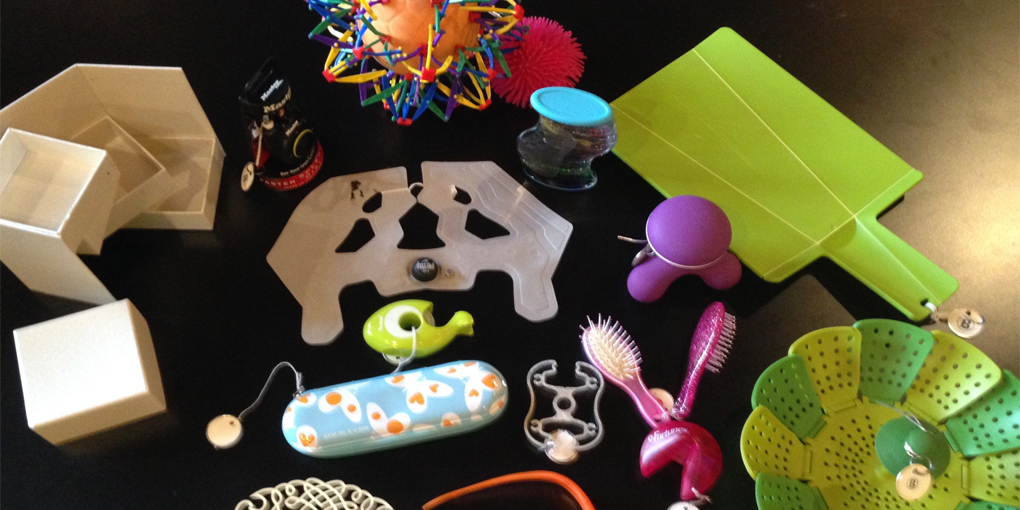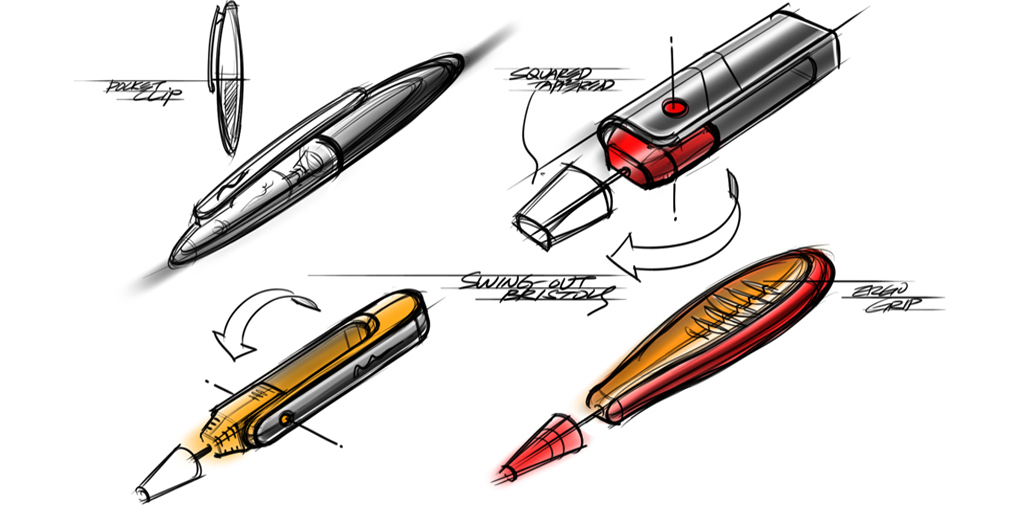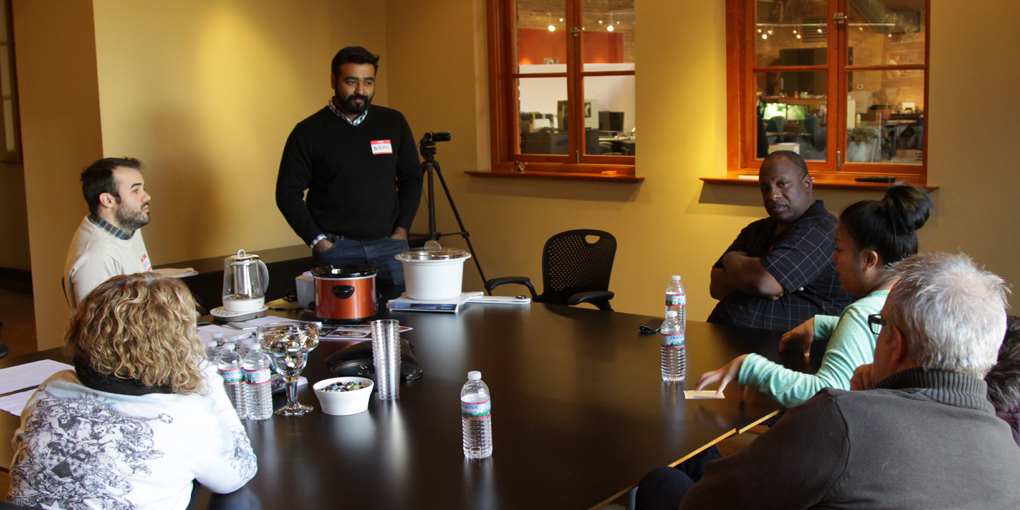What Sparks Innovation?
As human beings, we naturally fall into a habit of looking at the world around us with the same eyes and create similar perceptions. However, I believe if you take a step back and question what you experience, ”sparks of innovation” will fly.
Working in product development for more than 30 years, I know firsthand there is no such thing as forcing creativity. We are all creative in our own way. But – my question is, what is the spark that drives innovation? I have seen time and again, the powerful connection between research and innovation. Research enables you to see where an industry is heading and gauge consumer feedback to determine product pain points, and in turn a solution. Research can be a time saver, cost reducer and the spark that will drive a good idea to be great. Having worked with
forward-thinking clients and surrounded myself with colleagues that continually challenge the status quo, I have compiled five tips on how inspiration can drive designers and individuals to create their “spark of innovation”.
1. Look Where Others Don’t: With the power of technology and the good ole’ Internet, it has never been easier to conduct research in the form of a SWOT analysis. Analyzing your concept, market and/ or consumer through the lens of Strengths, Weaknesses, Opportunities and Threats enables you to look for the white space that differentiates your product from the competition. Educating yourself about the market landscape and studying your competitors and trends will point you down the right path where innovation can be found. Another area most people forget to look for inspiration are pre-existing patents. Another are to look for sparks can come from conducting patent research.
IP rights, both from a clearance and procurement standpoint can put you in a position where innovation may be just a step away, and can lead you down an entirely different path than what you anticipated. In some cases it might be open domain, but you also might find products protected by IP rights that are similar to what you are trying to create. While you certainly don’t want to infringe on the IP of others, you should use this as a sign of validation and need to further improve upon.
2. Create Crazy Personas with Personality: Personas are a visual description of the different types of users and their environments. Think of a persona as a person you know, they have a mode of transportation such as a bus, train, car or plane. They live in a place, house, apartment, rental by the ocean. Personas have different professions in society with levels of community interaction, family and other personal traits. When creating personas make sure to include as much detail about the individuals life style, their habits, if they have pets and other personal traits that will invoke conversation and new ideas. Personas help us to articulate how a consumer might operate the same product but in a different way. Many times development teams use personas as a stimulus tool to provide that “spark” and allow teams to think outside the box. This exercise is often an eye opener, especially when developing products that are used
by a diverse demographic user base and range greatly in age.
3. Introduce Fun Props and Thingamajigs: Over the years I have continued to collect fun objects that have an interesting mechanism, cool use for a material or simply has an interesting shape that is ergonomic. These “cool products” are some of the best tools for sparking innovation. Simple product samples allow everyone to collaborate with tactile objects. Simple mechanisms like a plastic folding cutting board that can lead to new ideas that may incorporate similar materials but solve completely different problems, like a flat spoon that is more portable for camping. It’s “what if” mixed with that “thingamajig” to come up with new ideas and innovative solutions. Props can range from craft items like scissors and toys to old technological games like Etch-a-sketch. It’s important to remember, innovation can be sparked from something as simple as a pencil that you may be holding. Remember, ideas can spark at any time and anyplace so best to always be prepared.
4. Visualize Your Idea: The comment “a picture is worth a thousand words” really emulates the value of being able to visualize the unknown. Visualizing your idea is one of the most important things you can use to share your ideas with others. Designers like to start with quick thumbnail sketches to capture the intent, and then through continued refinement, more ideas are integrated until the story can be told.
Other ways you can visualize your ideas is through quick sketch models made from paper, tape and other found objects. Three dimensional prototypes help spark creativity by allowing others to visualize how things work in spacial relationship to each other, along with introducing the need for well thought out ergonomics, use of materials, aesthetics and feature introduction to evaluating cost and method of sale.
5. Listen for Sparks of Inspiration: I recommend investing time and a little money to conduct online qualitative research. This is an opportunity to get your product or service in front of real consumers and ask all the essential questions that should be answered to avoid product failure and expensive investments that could cost tens of thousands of dollars, if not millions. Conducting the survey online also allows you to reach a multitude of people to make sure you’re getting good representation from your sample market.
Testing your ideas with your target user early in the development process is imperative to making sure you’re on the right track. This also give you a chance to test your hypothesis and see how your innovative features hold up. This will save you valuable time and money as well as give you the opportunity to advance your idea and continue to keep your spark on the right trajectory.
Once you have an idea and the product has passed the initial screening stages, I often recommend taking it one step further and having a two-way dialogue with the stakeholders who will interact with your new product and can provide insight from each of their perspectives. It is all about getting insights straight from the source and it’s their opinions that will determine how well it will do in the marketplace. Also, including your stakeholders gives them an opportunity to have “buy-in” to your idea, and it gets them excited to keep the spark going.
Remember to keep your exploration process fun and think out of the box. Make sure your ideas and solutions relate back to personas established earlier in the process. Create sketches and mock-ups to demonstrate your ideas and communicate the features and benefits. Share your ideas with others and listen. Finding your spark of innovation comes from being observant and asking lots of questions.
For additional information about this article or if you have comments, please contact info@beyonddesignchicago.com







 Top
Top
